Description of the breeds of chocolate cats and their content
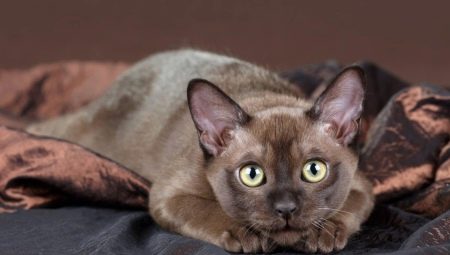
For many people, brown and all its shades are a symbol of calmness and comfort, as well as warmth. This color has coffee, chocolate, autumn leaves, hot tea. Few will not feel the aroma and taste at the words: a cup of coffee and a chocolate cake. Few people will not be delighted with such a combination. And what other pet would be so identified with coziness and comfort if not a cat. And there are such cats, and of various breeds. They are very pretty, some of them are smooth-haired and some are like a fluffy chocolate bar.


Peculiarities
An interesting fact is that genetically the chocolate color belongs to the black group. It determines its recessive gene, therefore, it is not as easy to deduce such a color as a dominant color.
There is a special calculator that allows you to determine the likelihood of a chocolate kitten in a litter. To do this, you need to know not only the color of the parents, but also their genotype. In accordance with Mendel's law, you can calculate the percentage probability that it is from these parents that you can get a dark brown kitten.
The calculator also calculates the probability of a harlequin, bicolor, tortoiseshell or marbled coat of a future kitten.
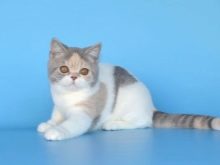
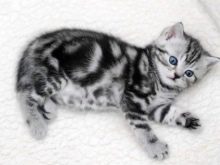
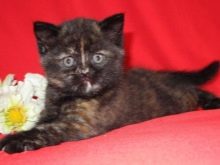
Competent breeders are well aware of the set of genes of their cats, which allows them to achieve unusual colors in feline cubs. Despite the fact that there are not so many genes that are directly responsible for the color of the animal, there are a huge number of combinations of them. In the formation of the color of each kitten, two genes are involved - from the side of the mother-cat and the father. It is their combination that gives interesting and unusual color options for animals.
The York cat is completely chocolate. It was bred in the USA in a rather interesting way.An ordinary cat lover has been choosing kittens of this color from Persian and Siamese representatives for a long time. This is how this breed appeared, which was officially recognized in 1983. They are energetic, friendly cats with uniformly colored coats of brown and lilac colors. No spots, stripes, marks are allowed.
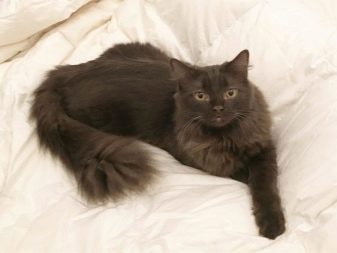
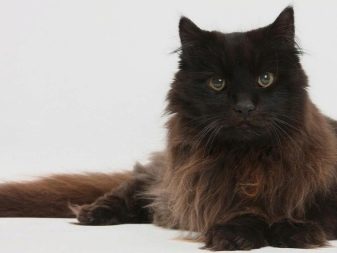
It is impossible to buy representatives of the breed in Russia, there are no nurseries. Buying a kitten abroad is a very expensive undertaking, the price for a kitten is at least 100 thousand rubles. Nevertheless, the breed is incredibly popular both in our country and in Europe and America.
Popular breeds
Consider the relatively inexpensive cat breeds that also happen to be "chocolate" in color.
Abyssinian cats are smart short-haired animals with an average build. The color of the Abyssinians is dark brown, approaching black. A stripe with a reddish-brown tint runs through the ridge line. The overall color ranges from coppery to reddish brown. Ticking can be double, even triple, which means that each hair of wool has two or three shades. As for the brown range of the Abyssinians, it includes wild, bay and beige colors.
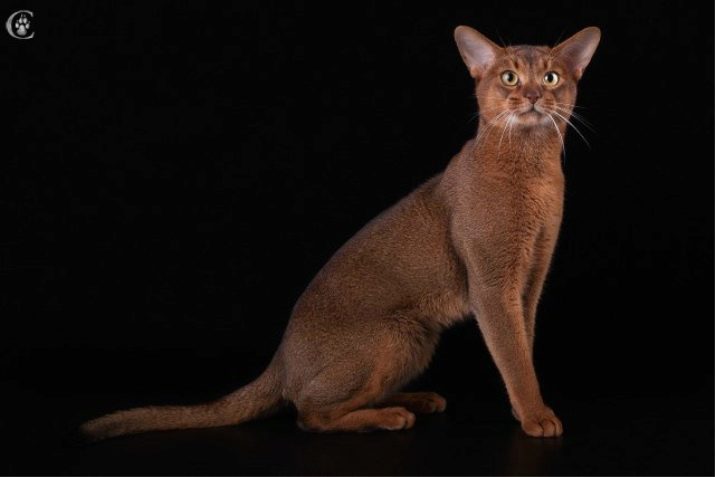
Havana cats are named after the corresponding shade of Havana cigars. And all because the color of the very first representatives of the breed was tobacco, dark brown. Havana cats are short-haired, uniform color. The breed was originally named "bay brown" because there were doubts about the truth of its British origin, but now they have disappeared. The breed is again called Havana, which suits it much more.
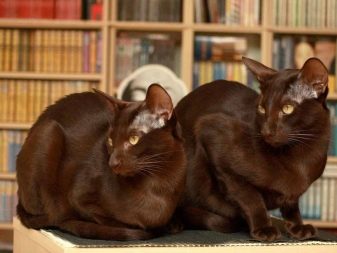
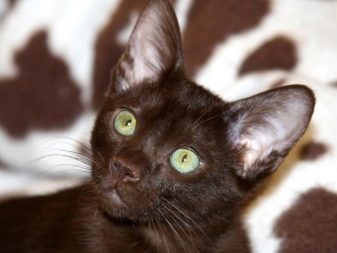
Chocolate Persian cats have excellent build, wide chest... Their bodies are stocky and strong. The head is in proportion to the body. The nose is slightly flattened, like Persian cats of all colors, the coat is long and soft. The brown color range includes all shades, but other tones are excluded in this situation. The undercoat can be gray with iridescent tints. The beauty of the cat is enhanced by the eyes, which can be orange (amber) or emerald green.
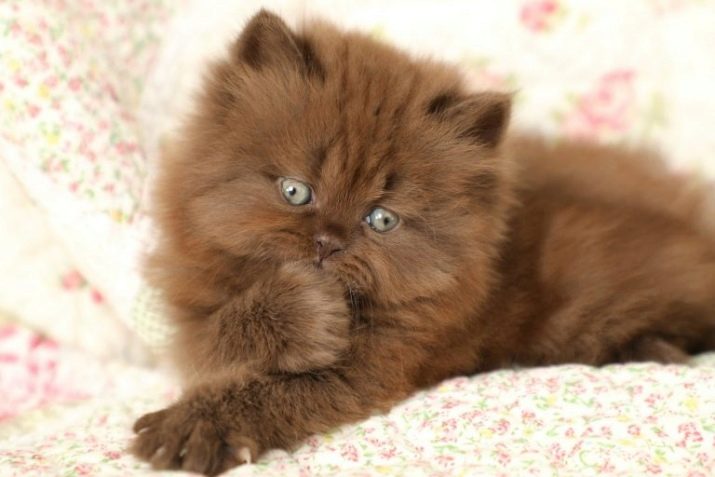
Chocolate exotic (in professional language called "seal point") - a breed of American origin. Chocolate color can be either uniform or marbled. Shades of brown range from coffee to tree bark. Exotic short-haired, attractive due to an interesting, original muzzle and round large eyes. Their charm is enhanced by a bushy tail. Their physique is average.
The character is specific, they need a special approach and increased attention - then the owner is provided with the love and affection of the pet.
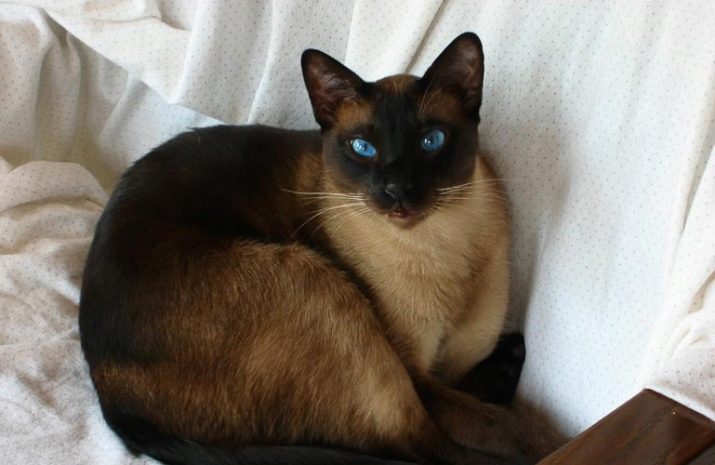
Burmese cats are strong and muscular. The breed originated in Burma, bred in 1934. For short they are called "Burmese". They have yellow eyes, brown coat color, that is, dark brown.
Burmese cats are very kind, sociable and perfectly find contact with children, adults, even dogs.
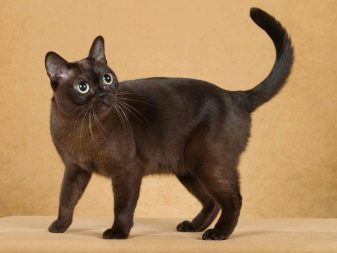
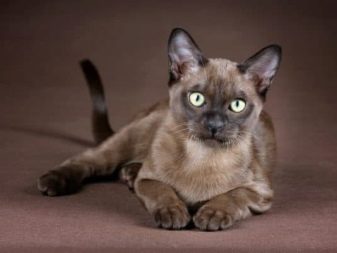
Devon Rex are alien cats. Big-eared, narrow-muzzled, with almond-shaped eyes. Devon Rexes have a slender body build. The appearance of these cats is as unusual as it is possible in principle. In addition to the original proportions of the body, they also have curly hair. Breeding the breed is not easy, since in this situation the principle of backcrossing works, otherwise the sign of curliness will disappear.
Devon Rex are outgoing and friendly, cheerful, curious and spontaneous. They are very attached to the owners.

British cats of chocolate color with blue eyes are unusually beautiful. They are plush in appearance and feel, and due to the color of their fur they look like little teddy bears. The British are shorthaired, but their coat is unusually thick. Chocolate British cats have a medium build. The color "chocolate" on the British is very deep, rich, evenly distributed. Sometimes it can have a brown tint.The uniformity of color is achieved for a long time - from a year to one and a half years. The chocolate British cat looks very pedigree.
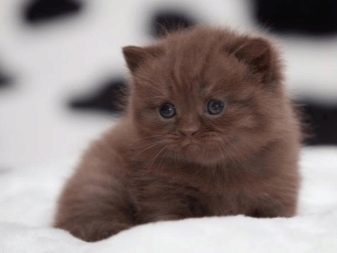
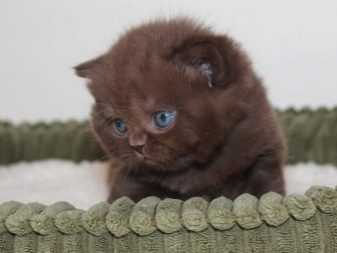
Scottish Fold cats can have all shades of brown. Not necessarily uniform, it can be brindle, tabby, tabby, ticked or spotted. In Scottish cats, white spots are acceptable. Such cats are called harlequins or bicolors. Harlequins are predominantly white in color, but there are large chocolate-colored spots on the trunk and legs. In bicolors, on the contrary, brown predominates, small white spots are present on the legs or chest.
The breed is distinguished by the unusual shape of the ears - they hang over the head, directly adjacent to it. The character of the Scots is meek and kind. The coat is mostly short, but on the tail it is quite fluffy.
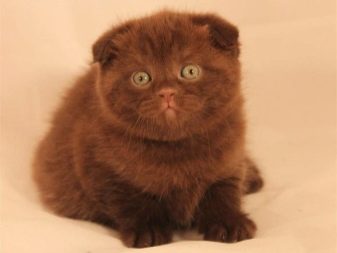
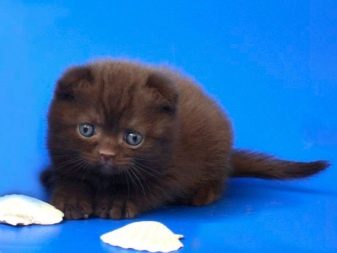
How to choose?
Choosing a chocolate cat must be very careful. It is necessary to acquire kittens exclusively in proven nurseries, with breeders who have an excellent reputation. You should be especially careful when choosing kittens whose color is not pure chocolate, but bicolor or spotted. Perhaps they lack the "chocolate" gene, that is, the offspring will not have the appropriate color. It is imperative to look at the kitten's parents: both of them should have the color "chocolate", only then it will be clear that the kitten has this gene.
The American kitten registration system is characterized by complete trust in the breeder. Therefore, if the breeder indicates "chocolate" in the color of a cat, then it will be registered.
So even if the animal received an assessment on the American site, this does not mean at all that the color is true.

In addition, you need to take into account that the prices for chocolate-colored kittens do not depend on their breed. For example, a show-class British kitten costs between $ 400 and $ 1,000. The cost of a Scottish Fold kitten ranges from 3 to 25 thousand rubles. Abyssinians will cost you from 10 to 25 thousand rubles, depending on the class of the animal. The Devon Rex show class costs about 30,000 rubles, the Brid class is cheaper. Persian kittens are more budgetary, their price varies from 3 to 10 thousand, but the Burmese breed is not so cheap - one kitten costs from 15 to 20 thousand rubles.
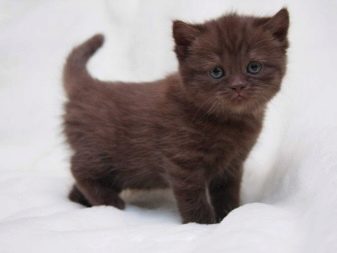
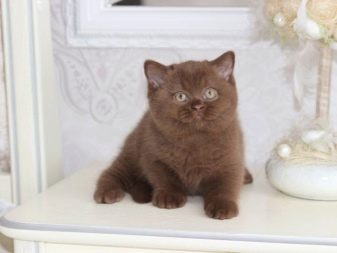
Subtleties of care
A chocolate-colored cat should be looked after in the same way as for its relative of any other color. In this situation, more attention should be paid to the breed of the cat, but not to the color.
Persian cats need to be looked after as the breed requires - comb them out thoroughly and often, keep their muzzles, teeth and ears clean. For the Persians, a slicker is needed, as it is a very fluffy breed.
If the cat loves to walk, she should at least wash her paws after walking, and if the coat is long, then bathe. Therefore, it is the owner's business to make sure that the pet is accustomed to water and is not afraid of it.
A representative of any breed must be taken to a veterinarian for a routine examination every 6 months. Of course, vaccinations, antiparasitic measures should be carried out on schedule.
Movement is necessary for all cats, even the most delicate ones.

If your pet is inactive, take care of proper, balanced nutrition. The same applies to castrated males - in order to avoid obesity, the cat must be properly fed. In general, feeding should be done in strict accordance with breed guidelines.
There are few cats who like to be alone for a long time. Most of them need society, or at least the presence of the owner. Leaving them alone for a long time, the owner runs the risk of at least returning to disorder, and as a maximum - the cat will "punish" him by arranging a real racket for his return. After all, one should not forget that most cats are very wayward, even obstinate, they know how to take offense and take revenge. You should not offend your pet, since you have brought it in.
You can take a closer look at the chocolate fold kittens in the next video.
































